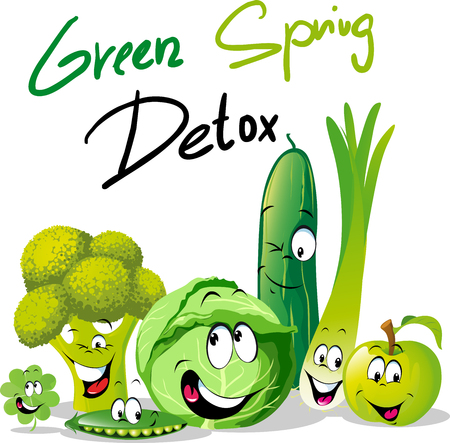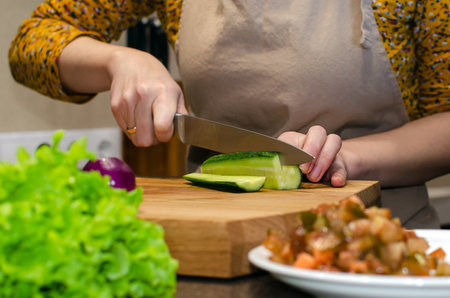Understanding Skin Detox: The Science and British Approach
When it comes to skincare, the term ‘skin detox’ is often used in marketing and social media, but what does it genuinely mean? Scientifically, a skin detox refers to supporting your skin’s natural processes of renewal, protection, and repair. Contrary to popular belief, the skin is already highly efficient at eliminating toxins via its own metabolic activities—your liver and kidneys do most of the heavy lifting internally. Many myths suggest that harsh cleanses or intensive treatments are necessary to ‘purge’ impurities. However, the British approach to skincare is rooted in gentle, evidence-based rituals that respect the skin’s barrier and microbiome. Rather than aggressive scrubbing or extreme fasting, UK dermatologists recommend nurturing routines using mild cleansers, nourishing ingredients, and locally-sourced botanicals tailored to our climate. The focus is on long-term health rather than quick fixes, underpinned by science rather than fads. This philosophy champions balance: supporting your skin’s innate functions with thoughtful care and locally-available resources.
2. Essential Tools and Preparing Your At-Home Sanctuary
Transforming your home into a tranquil spa environment does not require expensive gadgets or elaborate décor. In true British fashion, practicality meets comfort by using household staples and accessible items to set the mood for an effective skin detox ritual. Below is a guide to assembling everything you need, ensuring your experience is both relaxing and rooted in local tradition.
Must-Have Tools Using British Household Staples
| Item | Purpose | How to Use |
|---|---|---|
| Soft Flannel (Face Cloth) | Gentle cleansing and exfoliation | Dampen with warm water to remove masks and scrubs |
| Kettle | Steam preparation | Boil water for facial steaming using local herbs like chamomile or mint |
| Mason Jar or Teapot | Infusing botanicals | Brew herbal blends for topical or aromatic use during rituals |
| Ceramic Bowl | Mixing ingredients and steaming | Combine DIY mask ingredients or use for steam baths |
| Cotton Muslin Cloths | Mask removal and compresses | Soak in warm water and gently wipe away treatments |
| Scented Candle or Essential Oils (e.g., Lavender, Rosemary) | Create a calming atmosphere | Light before starting your ritual to promote relaxation |
Setting the Scene: Tips for a Relaxing Spa Atmosphere at Home
- Tidy Up: Clear clutter from your bathroom or bedroom to foster a calm, organised space.
- Soft Lighting: Opt for dimmable lamps, fairy lights, or candles for a gentle glow reminiscent of boutique spas.
- Soothe with Sound: Choose a playlist of gentle British folk music, classical pieces, or nature sounds (think rain on rooftops) to enhance relaxation.
- Warm Towels: Heat towels on a radiator or in the airing cupboard—an iconic British touch—for extra comfort during your ritual.
- Beverage Corner: Prepare a pot of English herbal tea such as nettle or elderflower, both celebrated locally for their wellness benefits.
A Thoughtful Approach: Safety and Comfort First
Before beginning any skin detox routine, always patch-test new ingredients—even classic local favourites like oats or honey—to avoid adverse reactions. Prioritise comfort by wearing loose clothing and ensuring the room temperature is pleasant. Setting this foundation will help you fully immerse in each step of your at-home ritual, blending British practicality with genuine self-care.

3. Top Local British Ingredients for Skin Detox
Britain’s natural larder offers a wealth of gentle yet effective ingredients that can elevate your at-home skin detox rituals. Embracing local produce not only supports sustainability but also ensures freshness and efficacy. Here is a curated look at four standout British ingredients, each backed by research and beloved for their suitability across diverse skin types.
Oats: The Soothing Staple
British-grown oats are a powerhouse for sensitive or irritated skin. Rich in beta-glucan, oats form a protective barrier on the skin, locking in moisture while reducing redness and inflammation. Studies highlight their anti-inflammatory and antioxidant properties, making them ideal for homemade masks or gentle exfoliators. Colloidal oat baths have long been recommended by dermatologists for calming eczema-prone and dry skin.
Chamomile: Calming & Anti-Inflammatory
Chamomile, widely cultivated in English gardens and meadows, is renowned for its soothing effects. Chamomile extract contains apigenin, a compound with proven anti-inflammatory and antibacterial benefits. Used as an infusion or facial steam, it helps reduce puffiness, calm breakouts, and impart a healthy glow—making it suitable for sensitive or combination skin types.
Honey: Nature’s Antibacterial Elixir
British honey, particularly from local beekeepers, is more than just a sweetener; it’s a natural humectant and antibacterial agent. Raw honey has been shown to support wound healing and balance the skin’s microbiome. When used as a mask or spot treatment, it hydrates deeply without clogging pores—beneficial for both dry and acne-prone complexions.
Sea Salt: Mineral-Rich Exfoliant
Sourced from Britain’s coastline, sea salt is loaded with trace minerals such as magnesium and potassium. These minerals help draw out impurities, promote circulation, and provide gentle physical exfoliation. Sea salt scrubs can revitalise dull skin and unclog pores when used sparingly—best suited for normal to oily skin types.
Choosing Ingredients for Your Skin Type
The versatility of these local ingredients means they can be tailored to your individual needs. Oats and chamomile excel for those with sensitivity or redness; honey suits most complexions but is especially beneficial where hydration is needed; sea salt offers detoxification but should be used cautiously on delicate or broken skin. By opting for homegrown British staples, you’re not only nurturing your complexion but also connecting with the best of local wellness traditions.
4. DIY Skin Detox Recipes with a British Twist
Detoxing your skin at home needn’t require exotic ingredients or complicated routines. Instead, you can harness the power of quintessentially British staples—like oats, local herbs, and honey—to craft effective, natural treatments. Below, discover easy-to-follow recipes using ingredients you’re likely to find in your local shops or garden.
Oat Cleanser for Gentle Exfoliation
Ingredients:
| Ingredient | Quantity | Source |
|---|---|---|
| Porridge oats (unflavoured) | 2 tbsp | Local supermarket |
| Warm water or chamomile tea | Enough to make a paste | Tap water or loose-leaf tea |
Instructions:
- Grind oats in a food processor until fine.
- Add enough warm water or cooled chamomile tea to form a paste.
- Massage gently onto damp skin using circular motions.
- Rinse off with lukewarm water and pat dry.
Herbal Steam Facial Using Garden Herbs
Ingredients:
| Herb | Recommended Quantity | Benefits |
|---|---|---|
| Fresh mint leaves | A handful | Cleansing, invigorating aroma |
| Sage or rosemary sprigs | A few sprigs | Purifying, antibacterial properties |
| Lavender flowers (optional) | A few stems | Soothe and calm skin |
| Boiling water | Bowlful | Create steam infusion |
Instructions:
- Add herbs to a large bowl.
- Pour freshly boiled water over the herbs.
- Tent a towel over your head and lean over the bowl (keep face at least 12 inches from water).
- Breathe deeply for 5–10 minutes, allowing steam to cleanse pores.
- Pat face dry with a clean towel.
Cotswolds Honey Mask for Hydration & Glow
Ingredients:
- 1 tbsp raw British honey (ideally local, such as Cotswolds or Yorkshire varieties)
- (Optional) ½ tsp lemon juice for brightening (not recommended for sensitive skin)
- (Optional) 1 tsp plain yoghurt for added moisture and probiotics
Instructions:
- Mix honey with optional lemon juice and/or yoghurt in a small bowl.
- Smooth onto clean, dry skin, avoiding the eye area.
- Leave on for 10–15 minutes.
- Rinse off with warm water and enjoy soft, glowing skin.
Tips for Best Results:
- Always patch test new ingredients before full application.
- Choose organic or locally sourced produce where possible to minimise exposure to pesticides and support British farmers.
- Repeat these rituals weekly to maintain healthy, radiant skin without harsh chemicals.
5. Making the Most of Your Ritual: British Wellness Practices
Enhancing your at-home skin detox goes beyond the products you use—it’s about embracing holistic British wellness traditions that nurture both body and mind. Integrating mindful rituals can help transform your skincare routine into a restorative experience rooted in local culture.
The Power of a Proper Cuppa
No British ritual is complete without a proper cup of tea. Herbal teas such as chamomile, nettle, or mint—often grown locally—are rich in antioxidants and anti-inflammatory compounds. Sipping a warm brew during your detox session not only soothes the senses but also supports internal cleansing, complementing your topical treatments. Make it a mindful moment: sit comfortably, focus on the aroma and warmth, and allow yourself a pause from daily stresses.
Restorative Bathing with British Botanicals
A traditional soak in the bath is another time-honoured way to unwind. Add Epsom salts, Scottish heather, or locally sourced lavender to your bathwater for their soothing and skin-calming properties. The warm water opens pores, preparing your skin for further treatments while easing muscle tension. This simple act of self-care embodies the British appreciation for comfort and tranquillity.
Mindfulness Meets Tradition
Take inspiration from mindful practices like gentle breathing exercises or guided relaxation while applying masks or oils. Focus on each step, appreciating the textures and scents of native ingredients like oat, honey, or rosehip. This approach not only enhances product efficacy but also strengthens your connection to the present moment—a key principle in modern British wellness.
Creating a Personal Sanctuary
Your environment plays a crucial role in effective self-care. Light an English beeswax candle, play soft folk music, or simply open a window to let in fresh air from your garden or local green space. By weaving these thoughtful touches into your at-home skin detox, you create a sanctuary that reflects both tradition and wellbeing—making every ritual uniquely British and deeply restorative.
6. Aftercare and Ongoing Skin Health
Post-Detox Care: Supporting Your Skin’s Recovery
After completing your at-home skin detox, it’s essential to treat your skin with care to support its recovery and maximise the benefits of your ritual. Avoid harsh exfoliants or overly astringent products for several days, as your skin barrier may be temporarily more sensitive. Instead, opt for gentle, hydrating formulas—British oat-based creams or calendula-infused balms are excellent choices to soothe and protect.
Maintaining Results: Consistency is Key
To maintain the fresh, clear complexion achieved from your detox, consistency in your routine is vital. Cleanse daily with a mild, locally-sourced honey cleanser, followed by a light application of rose water toner. Regularly moisturise using creams containing native ingredients such as borage oil or elderflower extract, both known in British herbal tradition for their calming and reparative properties.
Weekly Rituals: Sustainable Self-Care Practices
Incorporate a weekly face mask made from British clay or mashed seasonal berries to naturally purify and brighten the skin. For exfoliation, try a gentle scrub using ground oats or sugar beet—both widely available and sustainable options within the UK.
Long-Term Healthy Skin: Embracing Local and Sustainable Choices
The foundation of ongoing skin health lies in choosing ingredients that are not only effective but also environmentally conscious. By favouring local produce—such as Scottish seaweed, English lavender, or Welsh honey—you reduce your carbon footprint while supporting British farmers and producers. Over time, these mindful choices contribute to healthier skin and a more sustainable beauty routine.
Final Advice: Listen to Your Skin
Your skin’s needs will fluctuate with the British climate and lifestyle changes. Pay attention to signs of dryness, sensitivity, or congestion, and adjust your routine accordingly. Remember, true skin health is a long-term commitment; by integrating local ingredients into your everyday regimen and respecting your skin’s natural rhythm, you lay the groundwork for resilient, glowing skin year-round.


